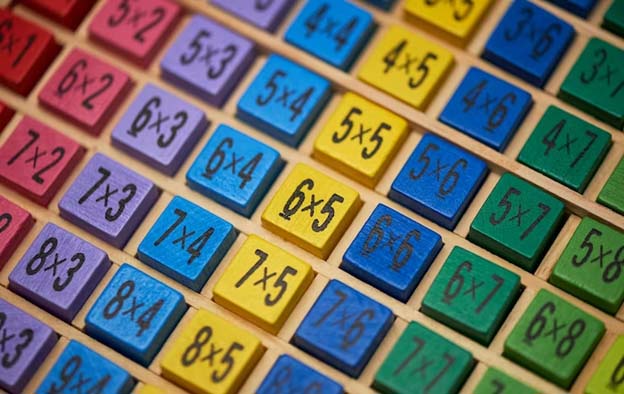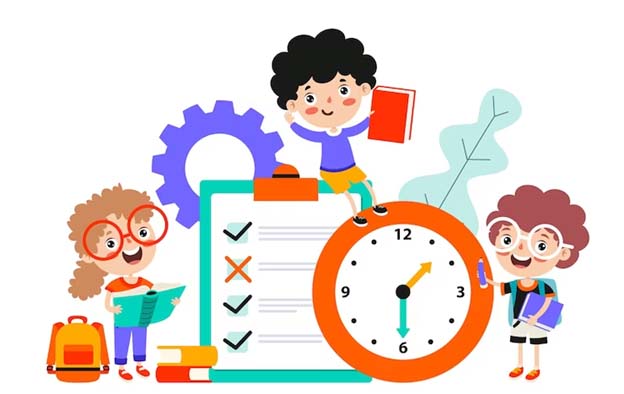Maths isn’t always a favourite subject among students, but mastering multiplication tables, or as some would call them, maths tables, can simplify and make it significantly more enjoyable. Not only are these tables fundamental tools for daily calculations, but they also serve as the foundation for more complex maths concepts. Today, we will take a deep dive into the importance of multiplication tables and share some effective techniques to remember them.
Also Read: Memorisation Techniques for Students
Why Are Multiplication Tables Important?
Multiplication tables play a pivotal role in enhancing numerical fluency, aiding quick calculations and problem-solving. They save valuable time in performing operations like division, fractions, and percentages. They also serve as a critical foundation for understanding advanced mathematical concepts, making them a crucial learning tool. Here are a few reasons why multiplication tables are important:
Numerical fluency: Maths tables enhance our numerical fluency. When you know your multiplication tables, you can easily perform other operations like division, fractions, and percentages. This fluency goes a long way in honing your mathematical skills.
Saves time: When you have multiplication tables memorised, you can quickly answer maths problems without spending time on manual calculations.
Problem-solving: Knowing your multiplication tables can simplify problem-solving strategies, as it can quickly help identify patterns and relationships among numbers.
Mathematical foundation: Mastering multiplication tables at a young age helps lay the groundwork for more advanced mathematical concepts like algebra and calculus.
Also Read: Consecutive Numbers
How To Memorise Maths Tables: A Step-by-Step Guide
Mastering maths tables becomes easy with consistent practice and strategic techniques. Begin with simple tables, create a multiplication chart, recognise patterns, and engage with educational games. Applying these tables in real-life scenarios enhances understanding and memorability. Remember, understanding the concept is key.
Start with the Basics
Begin with smaller tables like the 2s, 5s, and 10s. These tables are simpler and often have patterns that make them easy to remember. Gradually, move on to larger tables.
Make a Multiplication Chart
A multiplication chart is a great visual tool for understanding and memorising multiplication tables. Create a grid and fill it in with the products of the numbers, this way, you can see the patterns and relationships more clearly.
Use Tricks and Patterns
Each multiple table has its own unique pattern. For instance, in the 9s table, the tens digit increases by 1, and the units digit decreases by 1. Identifying such patterns can make learning tables much easier.
Practice Regularly
Regular practice is key to memorising multiplication tables. Incorporate daily practice sessions and quiz yourself regularly to reinforce your memory.
Use Songs and Rhymes
Songs and rhymes are fun and effective ways to remember multiplication tables. They can turn a tedious task into an enjoyable activity, helping you recall information faster.
Use Technology
There are many educational apps and online games available that can make learning multiplication tables fun and interactive. These platforms are designed to engage students in the learning process, making it easier for them to remember tables.
Relate to Real-Life Situations
Apply your knowledge of multiplication tables to real-world scenarios. For example, if you’re baking a cake and need to double the recipe, use your multiplication skills. This will not only make learning more relevant but also more engaging.
The journey to mastering multiplication tables can be challenging but certainly rewarding. Remember, the goal isn’t to just memorise them but to understand the concept behind them. With consistent practice and the right strategies, you’ll soon find multiplication tables as easy as 1, 2, 3!
Also Read: Tips for Senior Secondary Students for Tackling Homework
Visualising the Maths: The Role of Multiplication Charts
A multiplication chart plays a significant role in learning multiplication tables. It’s a powerful visual tool that provides a complete overview of all tables in one glance. This grid of numbers not only helps students understand the relationship between different numbers but also helps in identifying patterns within the tables.
The chart makes it easier for students to learn their tables by observing the systematic arrangement of numbers. For example, they can visually see how a number, when multiplied by 2, results in an even number, or how multiples of 5 always end in 0 or 5.
Moreover, a multiplication chart can also assist in gaining a better understanding of concepts like square numbers, as these form a diagonal line across the chart. Multiplication charts turn abstract concepts into tangible patterns, making the process of memorising multiplication tables more accessible and enjoyable for students. Therefore, when learning multiplication tables, it’s a good idea to start by creating and exploring a multiplication chart.
Also Read: Number Names for Kids
Consistent Practice of Multiples Tables
When it comes to mastering multiples tables, there’s no substitute for consistent practice. Regularly revisiting the maths tables can help to embed these numerical facts into your long-term memory, turning an initial struggle into an automatic response. Practising doesn’t have to be monotonous. You can diversify your study methods by using flashcards one day, and online games or quizzes the next. You can even teach someone else the tables – explaining them to someone else is a great way to solidify your understanding.
But remember, it’s important to not rush. Take your time to understand and learn each table before moving on to the next one. And even after you’ve moved on, keep going back to previously learned tables for reinforcement. Consistency in practice not only aids in memorisation but also develops confidence, making maths a less daunting subject. So, remember, in the journey of mastering multiplication tables, patience and consistent practice truly are the keys to success.
Also Read: 12 Key Benefits of Learning Abacus for Student
How Multiplication Tables Benefit Students
Multiplication tables can seem daunting to a beginner, but once they’re mastered, they provide a multitude of benefits to students:
Boost Confidence: Confidence in mathematics is vital for a student’s academic success. Learning multiplication tables boosts confidence as students find themselves able to solve problems more efficiently.
Enhance Mental Maths Skills: A good understanding of multiplication tables enhances mental maths skills. It promotes quick calculations and estimations that are crucial for exams and practical applications.
Improve Academic Performance: When students memorise their multiplication tables, they can solve maths problems more quickly and efficiently, leading to improved academic performance.
Foundation for Advanced Maths: Knowing the multiplication chart prepares students for more complex maths topics. It’s like a stepping stone for learning fractions, decimals, percentages, and even algebra.
Also Read: What is Minuend? Meaning and Examples
At EuroSchool, teaching maths is a dynamic, interactive process tailored to all age groups. They employ a mix of traditional and modern teaching methods, including visual aids, manipulatives, and digital platforms, to ensure conceptual understanding. Real-world applications of maths are emphasised to make learning relevant and enjoyable, fostering a deep-rooted understanding of the subject.










